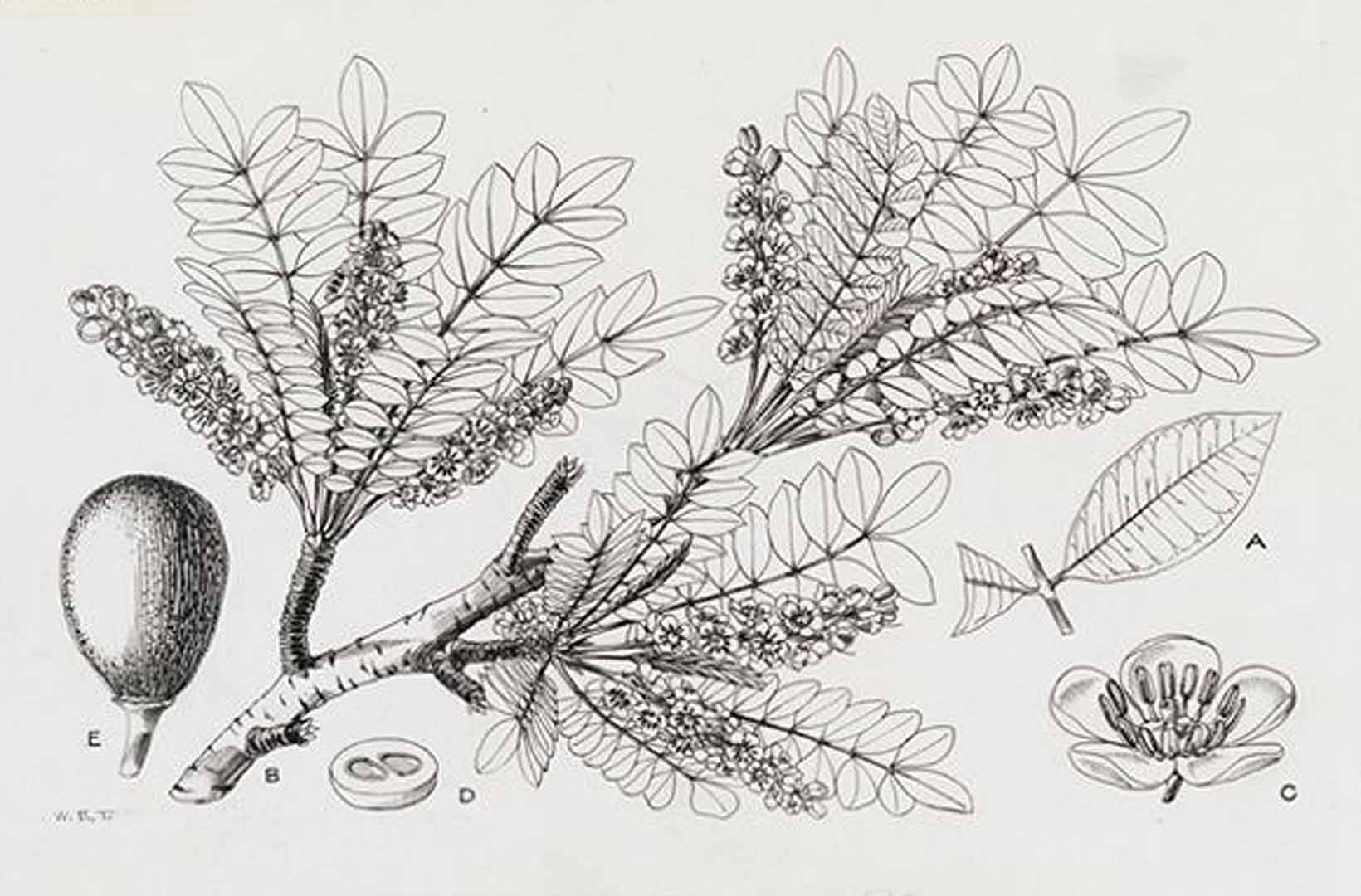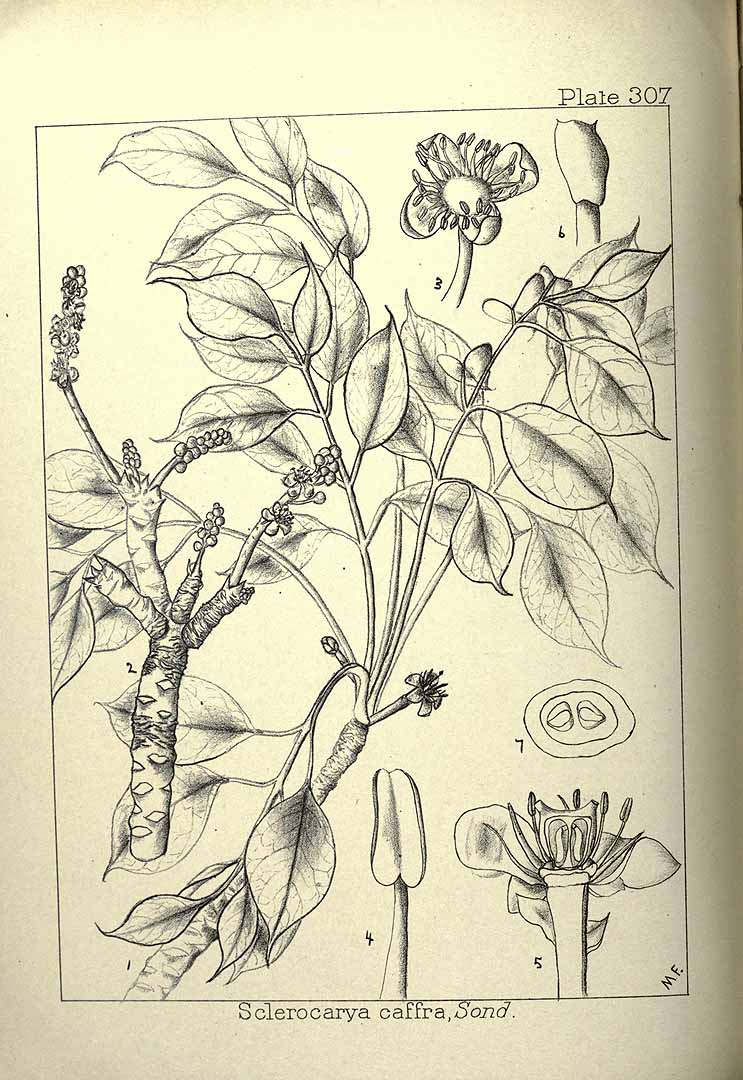! Nouveau site ici !
Vita > Plantae > Magnoliophyta > Magnoliopsida > Sapindales >
Anacardiaceae > Sclerocarya
Sclerocarya birrea
(Marula)
![Illustration Sclerocarya birrea, Par Grandidier, A., Histoire physique, naturelle et politique de Madagascar, Atlas (1886-1903) Hist. Phys. Madagascar vol. 34 (1890-1894) [Histoire naturelle des plantes, Atlas 2 (tt. 131-260)] t. 226A , via plantillustrations](../inc/images/illustrations/sclerocarya_birrea2.jpg )

 | *** - ***
| *** - ***
Vita > Plantae > Magnoliophyta > Magnoliopsida > Sapindales >
Anacardiaceae > Sclerocarya
Sclerocarya birrea
(Marula)
![Illustration Sclerocarya birrea, Par Grandidier, A., Histoire physique, naturelle et politique de Madagascar, Atlas (1886-1903) Hist. Phys. Madagascar vol. 34 (1890-1894) [Histoire naturelle des plantes, Atlas 2 (tt. 131-260)] t. 226A , via plantillustrations](../inc/images/illustrations/sclerocarya_birrea2.jpg )
Un arbuste ou un arbre. Il atteint une hauteur de 9 m et une largeur de 6 m. Il peut mesurer 15 m de haut. Il perd ses feuilles au cours de l'année. La couronne est dense et arrondie. L'écorce est grise et fi... (traduction automatique)
→suite
⬀
Le  donne accès au menu
donne accès au menu (c'est votre point de repère) 😊 ;
En dessous vous avez la classification, à partir de la vie (Vita, premier rang) jusqu'à la classe au dessus de la plante, dont vous trouvez ensuite le nom scientifique/botanique (latin) puis le nom commun (français), le cas échéant ;
C'est aussi un lien vers la fiche complète (tout comme la ✖, en bas à droite, et le +, en dessous de la description) ;
Vient alors l'illustration (ou ce qui la remplace, en attendant), la comestibilité :
Et en bas
⬂


![Illustration Sclerocarya birrea, Par Grandidier, A., Histoire physique, naturelle et politique de Madagascar, Atlas (1886-1903) Hist. Phys. Madagascar vol. 34 (1890-1894) [Histoire naturelle des plantes, Atlas 2 (tt. 131-260)] t. 226A , via plantillustrations - Fermer Illustration Sclerocarya birrea, Par Grandidier, A., Histoire physique, naturelle et politique de Madagascar, Atlas (1886-1903) Hist. Phys. Madagascar vol. 34 (1890-1894) [Histoire naturelle des plantes, Atlas 2 (tt. 131-260)] t. 226A , via plantillustrations - Fermer](../../inc/images/illustrations/sclerocarya_birrea2.jpg )




